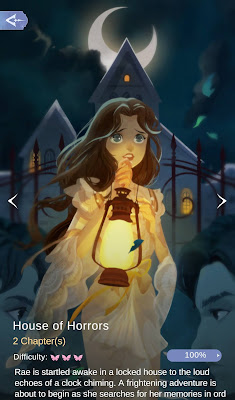Review: Beauty of Rosemead
It's been a while since I read Beast of Rosemead by Lucy Tempest. By the time I got around to its sequel, Beauty of Rosemead, I remembered very little except that the first book was very similar to the Disney adaptation of "Beauty and the Beast." Thankfully, Beauty of Rosemead had more than enough exposition to refresh my memory. As the fifth book in the Fairy Tales of Folkshore series and conclusion of Bonibel's story, I found it pretty enjoyable for what it was. I liked that Lucy shortened this story to two books since the Thief of Cahraman trilogy, her gender-swapped retelling of "Aladdin," ran a little too long with three books to tell a single story filled with exposition. She continues to shrink her garrulity with Princess of Midnight, the next book in the series, which is going to be a single standalone book. Beauty of Rosemead contained some of the same unnecessary exposition as the Thief of Cahraman and put too much focus on the eastern storytelling trope that children must take on responsibility for their parents' past mistakes when they come of age, but I liked it better than the Cahraman books overall.
Beauty of Rosemead picks up right where Beast of Rosemead left off with Leander pushing Bonnie into a portal that would take her back to her home village for her own protection. Of course, Bonnie wasn't the type to sit around and wait while her loved ones were in trouble, so she chased right after Leander alongside her father and her friend Ella (who the next book will be about). The biggest overarching theme of Beauty of Rosemead is that sheltering someone under the guise of wanting to protect them will only result in resentment later on. Everyone in Bonnie's life treats her like a damsel in distress when in reality, she is the only one who can decide what sort of princess she wants to be. When she learns the truth about her past, it has a negative impact on every aspect of her life. Not only was she angry with her parents for hiding it from her, but Leander also assumed that she was intentionally hiding her true self from him as well, creating another obstacle in proving her love for him to turn him and his servants back into humans.
It was a little hard for me to keep track of all the characters in this book. Even though Bonnie and Leander as the main couple, there were also Leander's servants from the previous book, Ada and the other characters from the Thief of Cahraman trilogy, and all the fairy people Bonnie meets when she crosses over into the magical land of Faerie. There were a lot of details about Bonnie's family history that I found I simply wasn't that interested. I cared more about her current relationship with Leander than learning all the mistakes her parents made prior to her birth. Even though Lucy Tempest is an American writer, her books have themes that more common in Asian stories such as Dyesebel or Ashes of Love in which the main couple learns that the actions of their parents had a major impact on how they met and fell in love. This was just as pertinent in Beauty of Rosemead as it was in the Thief of Cahraman trilogy except that here it was more related to Leander's curse to become a beast than to how Bonnie fell in love with him. I would have liked to see this book go in a different direction. It would irk me if every adaptation in the Fairy Tales of Folkshore series is really about the protagonists' parents.
Unlike other "Beauty and the Beast" adaptations I've read in the past, this one was more about self-discovery than it was about romance. I didn't buy that Bonnie and Leander were this epic couple whose love was so powerful that it could overcome any curse, especially when the terms of Leander's curse were so vague that Bonnie wasn't even certain if she was the one who broke it at the end. I appreciated that most of the book was an original fantasy story and that Bonnie is a unique version of the "Beauty" character instead of another cookie-cutter bookworm. The ending was virtually identical to the Disney movie and felt as though Lucy was afraid to take the story her own direction for the big finale. I would have preferred for Bonnie to restore Leander's true form in a way that was specific to her character and more active than a mere a promise about their future. Though the book contains a detailed world with a map and a family tree of all the characters in the series, it still felt like something was missing when it came to the story.
Beauty of Rosemead is an adequate conclusion to Beast of Rosemead. It did an excellent job of building a rich world with a detailed history. I liked the themes of independence and self-discovery, but I wish that Bonnie and Leander were a stronger couple considering that the story theirs is inspired by what is considered one of the greatest love stories of all time. Though I had fun discovering Bonnie's past at first, the details became a little too heavy-handed after a while. The writing in this book was an improvement over the Thief of Caharaman trilogy. I hope that the future iterations of Fairy Tales of Folkshore will continue to improve. If you are a fan of the "Beauty and the Beast" fairy tale, I think it would be worth at least checking out Beast of Rosemead and continuing with Beauty of Rosemead if you enjoy it.











Comments